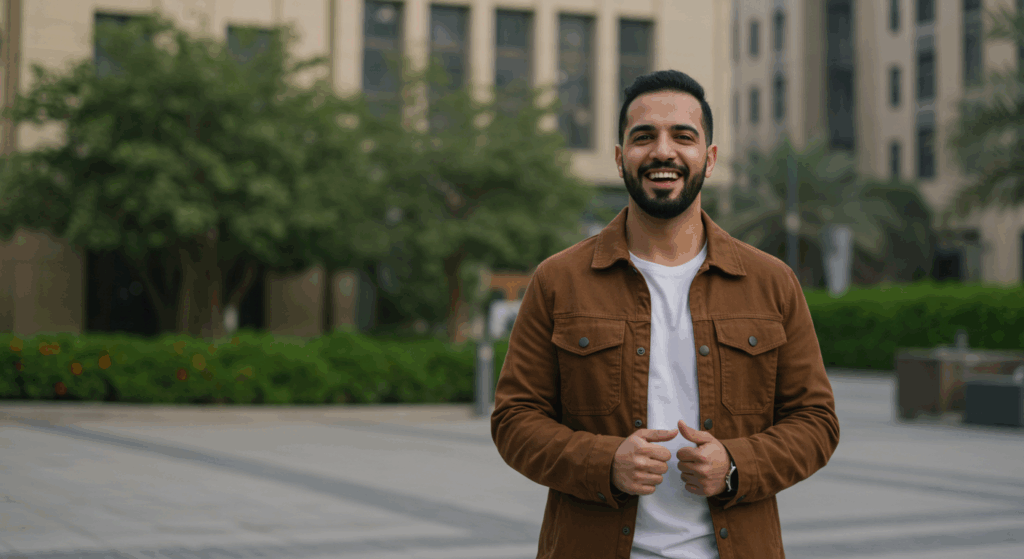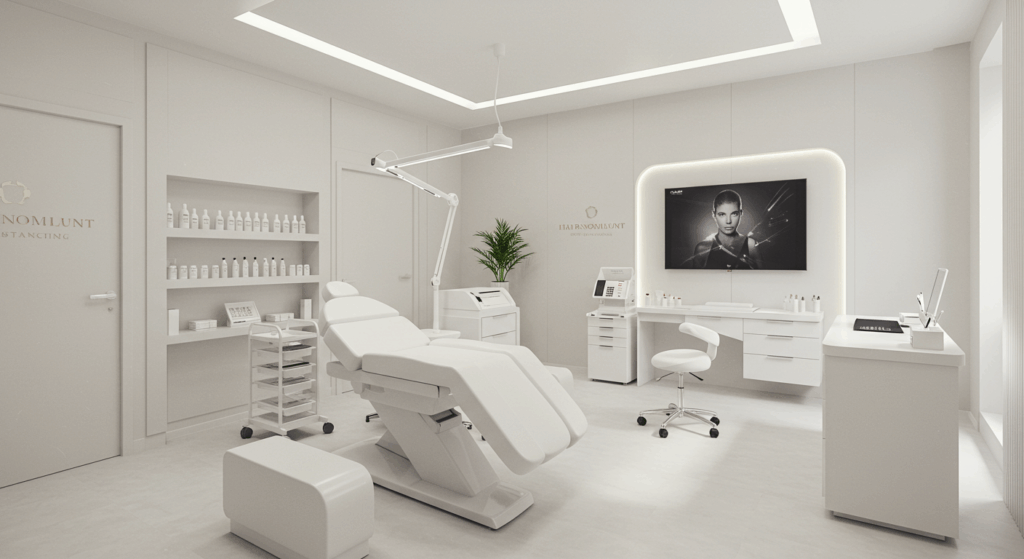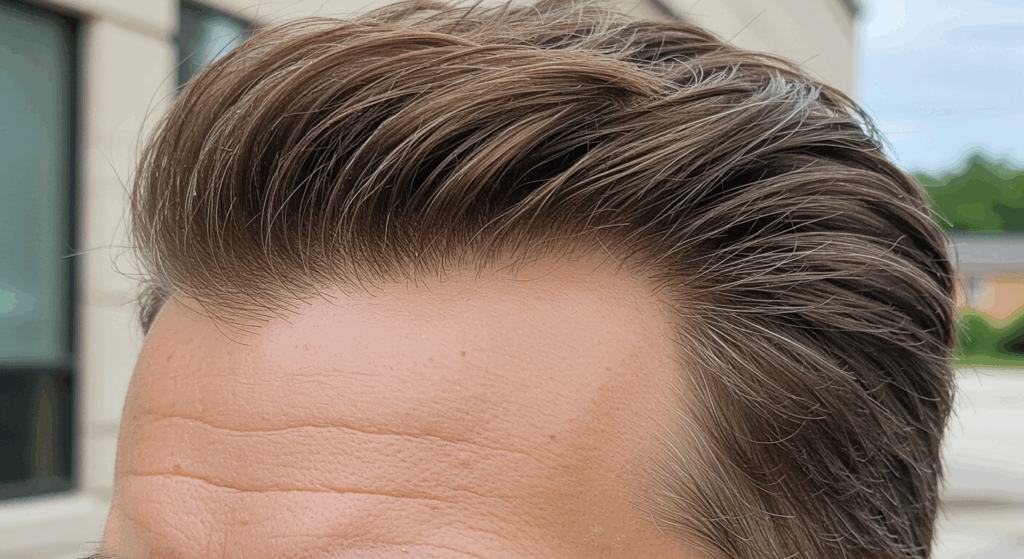Antalya, con su impresionante costa mediterránea e instalaciones médicas de primer nivel, se ha consolidado como un destino líder a nivel mundial para la restauración capilar. Pacientes de todo el mundo se sienten atraídos por la combinación única de cirujanos expertos, tecnología avanzada y una relación calidad-precio excepcional que ofrece la ciudad. Al investigar sus opciones, un término aparecerá una y otra vez: densidad.
Las clínicas prometen "alta densidad", "densidad máxima" y "densidad densa". Pero ¿qué significan realmente estos términos? ¿Cuál es la cantidad realista de injertos capilares que se pueden implantar por centímetro cuadrado? La búsqueda de la densidad es comprensible: es la clave para un resultado completo, natural y satisfactorio. Sin embargo, también es uno de los conceptos más malinterpretados y frecuentemente exagerados en el marketing de trasplantes capilares.
Esta guía le permitirá ir más allá de lo convencional. Le ofreceremos una visión general realista y con fundamento médico de la densidad de injerto capilar que normalmente puede lograr en Antalya. Comprender estas cifras y los factores cruciales que las influyen le permitirá establecer expectativas realistas y elegir una clínica que priorice su salud y resultados a largo plazo por encima de promesas irrealistas.

Primero, ¿qué es exactamente la densidad del injerto de cabello?
Antes de hablar de números, es fundamental definir correctamente nuestros términos. En el contexto de un trasplante capilar, la densidad se mide en injertos por centímetro cuadrado (injertos/cm2). Esto se refiere a la cantidad de unidades foliculares (injertos) que se implantan quirúrgicamente en un área de 1×1 cm del cuero cabelludo receptor.
Sin embargo, hay una distinción vital que todo paciente debe comprender:
Densidad del injerto vs. densidad del cabello
- Densidad del injerto: El número de unidades foliculares implantadas por cm2.
- Densidad del cabello: El número de cabellos individuales por cm2.
Un injerto capilar no es un solo cabello. Cada unidad folicular contiene naturalmente 1, 2, 3 o, a veces, incluso 4 cabellos. Un equipo quirúrgico experto clasificará estos injertos. Por ejemplo, se utilizan delicados injertos de un solo cabello para crear una línea de implantación suave y natural, mientras que se utilizan injertos robustos de 3 y 4 cabellos detrás para aumentar el volumen y la densidad.
Esto significa que una implantación de 40 injertos/cm² podría resultar en una densidad de cabello de 80-100 cabellos/cm², creando una apariencia mucho más gruesa de lo que sugiere el número de injertos. Así es como los cirujanos crean la ilusión de volumen.
Para poner esto en perspectiva, una persona sin pérdida de cabello suele tener una densidad natural de 80 a 120 unidades foliculares por cm². El objetivo de un trasplante capilar es... no Replicar la densidad original del 100%. Intentarlo es imposible debido a las limitaciones de donantes y a su riesgo médico para el cuero cabelludo. El verdadero objetivo es utilizar estratégicamente los injertos disponibles para crear la ilusión de densidad más atractiva desde el punto de vista cosmético.

El “Estándar de Antalya”: ¿Qué densidad de injerto logran de manera realista las clínicas?
Las clínicas de renombre en Antalya son conocidas por su capacidad para lograr excelentes resultados. Operan con base en principios de seguridad médica y maestría estética. Al hablar de densidad, piensan en rangos estratégicos, no en una cifra única.
A continuación se muestra un desglose realista de lo que puede esperar:
Densidad estándar: 25-35 injertos/cm2
Este rango de densidad es común y efectivo para cubrir áreas extensas de calvicie, como la parte media del cuero cabelludo y la coronilla (vértice). Proporciona una mejora estética significativa, logrando una buena cobertura con un aspecto natural. Si bien no es excepcionalmente grueso de cerca, combate eficazmente la apariencia de calvicie y es un uso sostenible de injertos de donantes para pacientes con pérdida capilar extensa.
Alta densidad: 40-50 injertos/cm2
Este rango suele reservarse para las zonas cosméticamente más importantes del cuero cabelludo. La línea frontal del cabello y la zona inmediatamente posterior son las candidatas ideales para un relleno de alta densidad. Alcanzar entre 40 y 50 injertos/cm² en el tercio frontal del cuero cabelludo crea un marco facial fuerte y definido, fundamental para una apariencia juvenil y natural. La mayoría de los pacientes con un buen cabello donante pueden lograr esta densidad en la línea capilar.
Densidad muy alta (“Empaquetamiento denso”): 55-65+ injertos/cm2
Este es el límite superior de lo que se considera seguro y eficaz. El “empaquetamiento denso” es una técnica especializada que es Sólo apto para candidatos ideales en áreas pequeñas y específicasRequiere una habilidad quirúrgica excepcional y un paciente con una elasticidad perfecta del cuero cabelludo, una excelente circulación sanguínea y un cabello donante abundante. Si bien algunas clínicas lo promocionan agresivamente, los cirujanos éticos lo utilizan con cautela. Intentar colocar más de 65 injertos/cm² aumenta significativamente el riesgo de comprimir el riego sanguíneo, lo que puede provocar un fallo generalizado del injerto (pérdida de choque) e incluso necrosis del cuero cabelludo (muerte del tejido).
La conclusión clave: Una clínica de primer nivel en Antalya no utilizará una densidad uniforme en todo el cuero cabelludo. Emplearán una estrategia de densidad variableImitando a la naturaleza. Esto significa:
- Mayor densidad en la línea frontal del cabello para enmarcar la cara.
- Densidad ligeramente menor Justo detrás de la línea del cabello para crear volumen.
- Densidad estándar en todo el cuero cabelludo medio y la coronilla para garantizar la cobertura y conservar los valiosos injertos del donante.
Desconfíe mucho de cualquier clínica que prometa una cobertura total de "80 injertos/cm²" o más en toda la cabeza. Esto es una señal de alerta que indica una mala comprensión de la fisiología del cuero cabelludo y una priorización del marketing por encima de la ética médica.

Tu plan personal: 5 factores que determinan tu densidad alcanzable
Los rangos de densidad mencionados anteriormente no están garantizados para todos. El número final depende completamente de su fisiología y las características capilares. Un buen cirujano en Antalya evaluará estos cinco factores clave durante su consulta.
1. Capacidad de su área de donantes (el factor más importante)
Su zona donante (la parte posterior y los laterales de la cabeza) contiene una cantidad limitada de folículos pilosos sanos y genéticamente resistentes. Este es su suministro vitalicio. Un cirujano solo puede trasplantar la cantidad disponible. Si su zona donante es naturalmente escasa o se ha debilitado por la edad o una caída capilar agresiva, la densidad capilar alcanzable será menor. Una buena clínica priorizará la salud a largo plazo de su zona donante, evitando la sobreextracción, que puede dejar la parte posterior de la cabeza con un aspecto irregular y debilitado.
2. Las características de tu cabello
Las propiedades físicas de tu cabello juegan un papel importante en la ilusión de densidad:
- Diámetro del tallo del cabello: El cabello grueso y áspero cubre más superficie del cuero cabelludo que el cabello fino. Un paciente con cabello grueso podría verse increíblemente denso con 35 injertos/cm², mientras que alguien con cabello fino podría necesitar 50 injertos/cm² para lograr un aspecto similar.
- Color de pelo: Cuanto menor sea el contraste entre el color de tu cabello y el de tu cuero cabelludo, más denso se verá tu cabello. El cabello oscuro en un cuero cabelludo claro se nota más fácilmente, por lo que requiere mayor densidad para un look completo.
- Textura del cabello: El cabello ondulado o rizado crea más cobertura y volumen que el cabello liso, proporcionando una mejor ilusión de densidad con menos injertos.
3. El tamaño del área receptora
Esto es simple. Si tiene un número limitado de injertos de donantes (p. ej., 4000) y una zona de calvicie muy extensa (p. ej., estadio 6-7 de Norwood), esos injertos deben distribuirse en una zona más amplia. Esto, naturalmente, resultará en una menor densidad general en comparación con un paciente con el mismo número de donantes que solo necesita rellenar una línea de implantación capilar en retroceso (estadio 3 de Norwood).
4. Salud del cuero cabelludo y riego sanguíneo
La intrincada red de vasos sanguíneos del cuero cabelludo (vasculatura) es lo que mantiene vivos los injertos recién trasplantados. Cada injerto implantado requiere una conexión a este suministro de sangre para recibir oxígeno y nutrientes. Amontonar los injertos demasiado puede saturar este sistema, lo que genera una competencia por los recursos, donde muchos injertos se pierden y no logran crecer. Factores como el tabaquismo, que contrae los vasos sanguíneos, pueden limitar aún más la densidad máxima segura.
5. La habilidad del cirujano y la técnica de implantación
La experiencia del equipo quirúrgico es fundamental. Un cirujano experto en Antalya utilizará su maestría para maximizar el impacto visual de cada injerto. Controlará el ángulo, la dirección y la distribución de los injertos para imitar los patrones naturales de crecimiento. Técnicas como la DHI (Implantación Capilar Directa), que utiliza un Choi Pen para la implantación, suelen asociarse con un empaque de alta densidad, ya que el Choi Pen crea una incisión precisa e implanta el injerto en un solo movimiento. Sin embargo, un cirujano altamente cualificado también puede lograr una excelente densidad con técnicas manuales FUE. La destreza manual es más importante que el nombre de la herramienta.
La consulta: Cómo hablar sobre la densidad con una clínica de Antalya
Durante su consulta, no será un simple receptor pasivo de información; será un participante activo en la planificación de su procedimiento. Para asegurar un plan realista, cambie su enfoque del mayor número posible a la estrategia más adecuada.
Evite preguntar: "¿Cuál es la densidad máxima que puedes hacer?"
En lugar de ello, plantéese estas preguntas estratégicas:
- “Teniendo en cuenta mi zona donante, el tipo de cabello y el nivel de pérdida de cabello, ¿qué es un... densidad realista y segura ¿Me lo recomiendas para la línea del cabello en lugar de la coronilla?
- “¿Podrías explicarme tu estrategia para la variación de densidad en mi cuero cabelludo para aprovechar al máximo mis injertos donantes?”
- ¿Puedes estimar el área total en centímetros cuadrados que planeas cubrir y el número total de injertos? Esto me permitirá calcular la densidad promedio.
- “¿Puede mostrarme fotos de antes y después de pacientes que han tenido Características del cabello similares y patrones de pérdida de cabello ¿A la mía?”
Una clínica confiable recibirá con agrado estas preguntas. Serán transparentes sobre las limitaciones y trabajarán contigo para crear un plan personalizado, dibujado directamente sobre tu cuero cabelludo, mostrándote dónde y por qué se eligen ciertas densidades.
Conclusión: En Antalya, busquemos estrategia, no solo números
Las clínicas de restauración capilar en Antalya son totalmente capaces de ofrecer resultados de alta densidad y de primera clase. La clave está en comprender que el verdadero éxito no reside en buscar una cifra arbitraria, sino en lograr un resultado estratégico, médicamente seguro y estéticamente agradable, a su medida.
La densidad que puede lograr es una ecuación única, determinada por su propia biología: su disponibilidad de donantes, su tipo de cabello y la magnitud de su pérdida capilar. El papel de un gran cirujano es resolver esa ecuación con maestría y habilidad técnica.
Al emprender su viaje a Antalya, ármese de esta información. Concéntrese en encontrar una clínica que ofrezca un plan transparente, personalizado y realista. Un paciente informado es un paciente feliz, y un trasplante capilar exitoso es aquel que luce una densidad natural y preserva la salud de su cuero cabelludo y zona donante durante años.
Descubra la experiencia de la Dra. Ebru Okyay, su médico de confianza. dermatólogo en AntalyaYa sea que esté buscando abordar problemas médicos de la piel o mejorar su belleza natural con tratamientos cosméticos, el Dr. Okyay está aquí para ayudarlo. Con atención personalizada y técnicas avanzadas, lograr sus objetivos para la piel nunca ha sido tan fácil.
